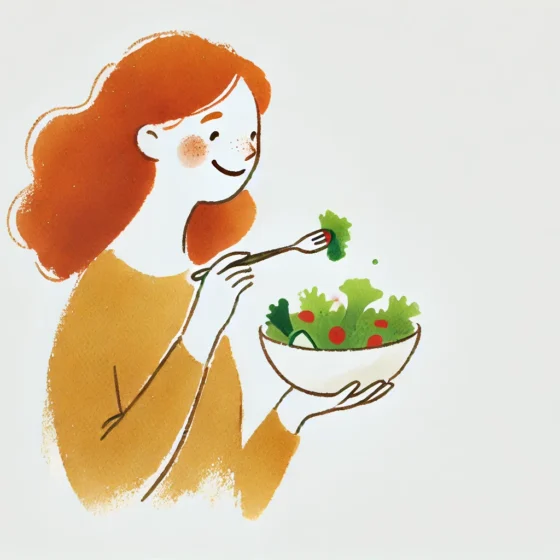Understanding the vast spectrum of our taste palette goes beyond merely distinguishing between salt, sweet, savory, and bitter flavors; it is an intricate part of our sensory experience that significantly influences food desires and choices. The intricate relationship between taste palette meaning and food satiation reveals a complex interaction involving various sensory cues, including odors, textures, and even the visual appeal of food. This complexity underscores the importance of exploring how our sensory characteristics of food drive our eating behaviors, preferences, and ultimately, our nutritional health. Such an understanding not only enriches our appreciation of the culinary arts but also enhances our approach to diet and wellness.
This article delves into the pivotal roles that taste, smell, and texture play in shaping our food choices and eating habits. It explores how these sensory properties interact to influence our desire for certain foods over others, from the immediate impact of savory odors tempting our taste buds to the long-term satiation provided by the texture of foods. Additionally, the discussion extends to psychophysical studies examining the subtle yet profound effects that sensory food play and food textures have on our perceptions and behaviors toward eating. Through these insights, the article aims to provide a comprehensive understanding of the sensory foundations of our taste palette, offering a roadmap to more mindful and satisfying eating experiences.
The Role of Taste in Food Desires
Sensory Properties and Their Influence
The sensory properties of food, including taste, play a crucial role in shaping dietary preferences and consumption patterns. Research indicates that the intensity and quality of taste can reflect the concentration of substrates like mono- and di-saccharides in sweeter foods or NaCl in salty foods. This relationship is pivotal in understanding how taste influences food desires and satiation. Studies have shown that there is no significant difference in the satiating effects of sweet versus savory foods, suggesting that energy compensation is similar regardless of taste quality . Furthermore, the duration and intensity of taste exposure during a meal can influence satiation, with longer exposure to intense tastes reducing food intake.
Taste as a Predictor of Caloric Intake
Taste not only influences immediate food choices but also plays a role in long-term dietary patterns. High-energy, nutrient-poor foods often have intense taste profiles that may encourage overconsumption, leading to adverse health outcomes such as obesity. Conversely, nutrient-rich foods tend to have a different sensory profile and are linked to healthier eating habits and lower overall energy intake. The innate preference for sweet tastes, which begins from infancy, suggests an evolutionary mechanism geared toward energy acquisition for growth and development. However, this preference can lead to increased consumption of sweet, energy-dense foods in the absence of regulatory dietary habits. Understanding these dynamics is essential for addressing dietary choices that contribute to long-term health issues.
Impact of Smell on Food Choices
The Mechanism of Sensory-Specific Appetite
The concept of sensory-specific appetite highlights how ambient odors can significantly influence food choices by inducing cravings for foods that share a similar sensory profile. Research demonstrates that exposure to certain food-related odors enhances the desire for congruent foods, those that are either sweet or savory, depending on the odor presented. For instance, the presence of a subtle pear odor can increase the likelihood of selecting fruit-based desserts, as shown in studies where participants were more inclined to choose such desserts when the odor was present compared to when it was absent.
Odor-induced Appetite and Food Selection
Further investigations into the role of smell in food selection reveal that not only does the presence of an odor influence immediate food choices, but it also affects overall appetite and consumption. In controlled settings, the introduction of specific food odors has been shown to increase the quantity of food consumed, particularly in obese subjects who might be more responsive to sensory cues. For example, exposure to a scented environment led to a significant increase in the amount of soup consumed compared to an unscented control setting. Additionally, these odors can induce a sensory-specific appetite for foods that are congruent in taste and energy density, suggesting a predictive mechanism where the smell prepares the body for intake of nutrients.
This interaction between olfactory cues and food intake is not restricted to any specific demographic but extends across different weight groups, including those with obesity, highlighting the universal impact of smell on eating behaviors. The findings underscore the potential of targeted olfactory interventions in managing dietary habits and enhancing satiation, which could be particularly beneficial in dietary management and obesity prevention strategies.
How Texture Affects Eating Behavior
Texture’s Role in Energy Intake
Food texture significantly influences eating behavior by affecting the rate at which food is consumed and the overall energy intake. Studies have shown that softer foods are typically eaten faster and in larger quantities compared to harder foods. Specifically, the energy intake rate from soft-textured foods was found to be 82% higher than from hard-textured foods, highlighting a substantial difference in consumption patterns based on texture alone. This rapid consumption of softer foods can lead to higher caloric intake within a shorter time frame, posing challenges for energy regulation and potentially contributing to weight gain.
Influence of Texture on Eating Rate and Satiation
The manipulation of food texture also impacts the eating rate and onset of satiation. Harder foods require more chewing time per bite, which slows down the eating rate and increases oro-sensory exposure. This prolonged oral processing time allows for better satiation signals to be processed by the brain, leading to earlier meal cessation. Moreover, the physical act of chewing provides sensory feedback that contributes to feelings of fullness, serving as a natural regulator of food intake. Research indicates that the eating rate for harder textures is on average 46% lower than for softer textures, and the oro-sensory exposure time is twice as long.
These findings underscore the potential of using food texture as a strategic tool in dietary management. By selecting foods with harder textures, individuals may enhance their satiation response and control their energy intake more effectively, which is particularly relevant in the context of increasing rates of obesity and overeating.

Psychophysical Studies on Taste and Texture
Comparative Analysis of Taste Intensities
Psychophysical studies have revealed that individuals with obesity may perceive the sensory and hedonic properties of sweet and fat differently compared to non-obese individuals. Research suggests that while obese persons experience normal sweet and fat sensations, their liking for fat is notably higher than that for non-obese individuals. This altered perception is crucial in understanding the obesity epidemic, as decreased sensitivity to sweetness in obese individuals could inadvertently enhance fat sensations, leading to a higher preference for fatty foods. Furthermore, studies indicate that damage to specific cranial nerves, which can occur due to medical conditions like otitis media combined with tonsillectomy, may lead to significant taste loss, particularly on the anterior tongue, and subsequently increase the preference for fatty foods in older adults.
Challenges in Discriminating Fat Content
The ability to discriminate fat content in foods is influenced by various factors, including the processing of food items. In ultra-processed foods (UPFs), the associations between perceived fat taste and actual fat content are stronger compared to less processed or unprocessed foods. This indicates that the sensory properties of UPFs might be engineered to enhance the perception of fat, which could affect satiety and potentially lead to overconsumption. Additionally, the reformulation of sugar-containing foods with non-saccharide sweeteners in an attempt to maintain sweetness while reducing sugar content could further complicate the sensory evaluation of these foods, possibly affecting consumer’s ability to accurately gage their energy content.
These findings underscore the complexity of the sensory evaluation of foods and suggest that both individual physiological differences and food processing techniques play significant roles in shaping our dietary choices and health outcomes.
Conclusion
Through a comprehensive exploration of how sensory experiences like taste, smell, and texture influence our food choices and eating habits, this article has unveiled the intricate mechanisms that govern our desires for certain foods. The pivotal role of sensory properties, from the tantalizing effect of aromas to the satisfying crunch of harder foods, underscores their significant impact on dietary preferences and nutritional health. These insights not only enrich our understanding of the sensory dimensions of our taste palette but also offer a roadmap to more mindful and satisfying eating experiences, highlighting the intricate dance between our senses and the foods we choose to consume.
The broader implications of these findings suggest a potential avenue for targeted dietary interventions and obesity prevention strategies, harnessing the power of sensory cues to modify eating behaviors. By appreciating the subtle yet profound ways in which taste, smell, and texture interact to shape our food desires, we are better positioned to make informed choices that support our health and well-being. Further research into these sensory influences promises to deepen our knowledge and guide future efforts to enhance dietary habits, presenting an exciting frontier in the pursuit of nutritional science and culinary innovation.
FAQs
1. How do our senses impact the way we taste food?
The senses, including smell, texture, and temperature, significantly influence our perception of taste. The process of tasting is enhanced by the nose, which adds “color” to our taste experiences. When combined with smell, the true flavor of food emerges. However, if the sense of smell is compromised, such as with a stuffy nose, tasting food accurately becomes more challenging.
2. In what ways do sensory experiences affect our hunger and food choices?
Sensory experiences, such as the smell and texture of food, play a crucial role in stimulating appetite and affecting what we choose to eat. The texture of food can influence the rate at which we eat and how much energy we consume until we feel full. Even subtle differences in the sensory qualities of foods that are equally liked can impact our eating behaviors and the amount of food consumed.
3. What can your taste preferences reveal about your personality?
Research suggests that specific flavor preferences may be indicative of certain personality traits. For instance, individuals who seek novelty and are proactive tend to prefer salty foods, while those with a high reward dependence, a trait associated with extroversion, often favor sweet flavors.
4. What factors can heighten your desire for food based on sensory inputs?
Appetite can be influenced by sensory perceptions, leading to an increased desire for food. Emotional states play a significant role in this process; people often select specific foods or types of food when experiencing emotions such as frustration, stress, loneliness, or sadness, or even as a form of reward during positive emotions.










